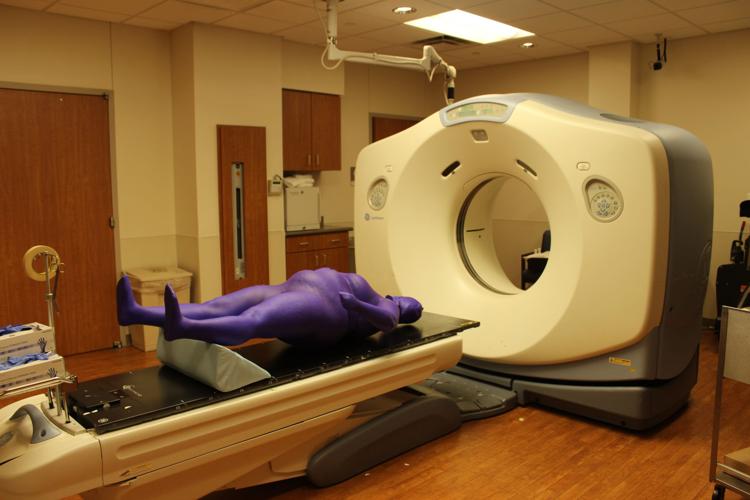 A Louisiana State University research team is putting all the benefits of progressive technology into play as they integrate 3D printing further into the field of medicine and diagnostics. Led by Wayne Newhauser, director of the medical physics program at LSU, researchers are going beyond newer but typical contributions to the medical world such as 3D printed prostheses and devices, making strides in creating better phantoms—models used as patient dummies when figuring out treatments and dosages.
A Louisiana State University research team is putting all the benefits of progressive technology into play as they integrate 3D printing further into the field of medicine and diagnostics. Led by Wayne Newhauser, director of the medical physics program at LSU, researchers are going beyond newer but typical contributions to the medical world such as 3D printed prostheses and devices, making strides in creating better phantoms—models used as patient dummies when figuring out treatments and dosages.
While phantoms used in the calculations of medications aren’t exactly new, 3D printed patient-specific ones are. And this could mean much better treatment for individuals suffering from a range of different types of cancer as one size certainly does not fit all when it comes to an illness or how to treat it.
“If you have a store-bought phantom, it’s going to look like the average person, and it may not be at all relevant to [certain patients],” said Newhauser. “You need to have a phantom that mimics those same anatomic characteristics [of the patient].”
The key to producing this more expansive type of guide for medical professionals is in the CT scan. Rather than using a more generic form, when a scan is performed, it can then be converted from 2D form into that of 3D that gives detailed information about the individual, allowing for more direct chemotherapy. Such patient-specific models also allow patients who are more fragile to be treated in a delicate manner in terms of delivering radiation to kill cancer cells. With 3D printing, medical professionals and technicians are able to take charge of creating such models themselves in many cases too—affordably, quickly, and with the ability to make changes as needed without having to go through a middleman, taking up more time and expense.
“Radiation therapy is very safe and very effective, but there are some cases where we know that [radiation therapy] struggles,” Newhauser said.
Currently, the team has created everything they need to begin making 3D printed phantoms, but they lack some of the more substantial tools: the proper 3D printer and materials.
“The short-term goal is to show that it’s feasible to do this,” Newhauser said. “Everyone has known since [the] get-go that in theory it ought to work, but there’s quite a difference between being able to recognize that it will work and being able to demonstrate that it’ll work. Our goal is to print a whole body, a 3D personalized phantom that mimics the properties of an actual patient.”
Once the team has finished testing their 3D printed phantoms, their goal is to find a company that will be able to manufacture the models so that medical professionals—and patients—around the world can reap the benefits of detailed care.
What do you think of this news? Let us know your thoughts! Join the discussion of this and other 3D printing topics at 3DPrintBoard.com.
[Source: The Daily Reveille]Subscribe to Our Email Newsletter
Stay up-to-date on all the latest news from the 3D printing industry and receive information and offers from third party vendors.
You May Also Like
$25M to Back Sintavia’s Largest Expansion of Metal 3D Printing Capacity Since 2019
Sintavia, the digital manufacturing company specializing in mission-critical parts for strategic sectors, announced a $25 million investment to increase its production capacity, the largest expansion to its operations since 2019....
Velo3D Initiates Public Offering in a Bid to Strengthen Financial Foundations and Drive Future Growth
Velo3D (NYSE: VLD) has been among a number of publicly traded 3D printing firms that have attempted to weather the current macroeconomic climate. After posting a challenging financial report for 2023,...
Micronics to Offer $2,999 SLS 3D Printer—Is it Real?
A startup called Micronics has recently unveiled a desktop powder bed fusion system priced at a mere $2,999. The team highlights the inclusion of its proprietary slicing software and the...
3DPOD Episode 193: Flow and What’s Possible in 3D Printing with Ricky Wildman, University of Nottingham
Ricky Wildman is working on 3D printing pills, but, as Professor of Multiphase Flow and Physics at Nottingham, he does a whole lot more. His research encompasses the characterization of...

































